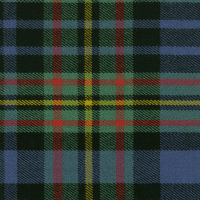|
|
Search

|
  Home Home
|
  Surname Surname
|
  First Name First Name
|
Popular Products

|
  Coat of Arms Coat of Arms
|
  Clan Badges Clan Badges
|
  Books & Gifts Books & Gifts
|
  Celtic Jewelry Celtic Jewelry
|
  Black Shirts Black Shirts
|
  CD Music CD Music
|
  Download Download
|
 Design Gallery
Design Gallery

|
  Irish Irish
|
  Flags Flags
|
  Celtic Celtic
|
  Tartans Tartans
|
  Scottish Scottish
|
  Claddagh Claddagh
|
  Surnames Surnames
|
  Highlander Highlander
|
  Celtic Radio Celtic Radio
|
Research

|
  History History
|
  Country Country
|
  Families Families
|
|
|
|
|
 Our store includes not only customized products, but select clothing items from brand name house hold names like Champion, Izod, WeatherProof, Adidas and more. For those in rural areas or that are home bound, we offer a separate clothing store containing thousands of items that can be purchased quickly with expedited service and shipping (hard to find larger sizes are available). We offer a wide selection of popular Celtic and Medieval books, Jewelry, Gifts, Accessories (such as caps and designer bags), Mouse Pads, Coat of Arms Plaques, Surname History PDF files, Bumper Stickers and Coat of Arms Downloads.
|
|
Our Heraldry Database has thousands of Family histories to search. Visit Now!
Bannerman

Coat of Arms
The name of Bannerman has its origin in the privilege held by ancestors of the family of carrying the royal standard in the tenth and eleventh centuries, and the arms of this family prominently proclaim this ancient and honourable office. It is not known when this right passed from the family, but according to one tradition it occurred in the late eleventh or early twelfth centuries, during the re.....
|
|
|
Heraldry Database: Airth
Airth

|
|


Surname: Airth
Branch: MacLellan
Origins: Scottish
More Info: Scotland
|
|
Background: The name is Gaelic in origin, deriving from ‘MacGille Fhaolain’ ‘son of the servant of St Filan’. St Filan was a missionary of the old Celtic church, and there is a village in Perthshire named after him. The name Filan itself is derived from the Celtic ‘faelchu’, meaning ‘wolf’.
|
 Motto: Motto: Think On. Arms: Or, two chevrons Sable. Crest: A naked arm supporting on the point of a sword a moor's head Proper. Supporters: Dexter, a man armed at all points holding a baton in his hand (all Proper); sinister, a horse (Argent) furnished (Gules). Badge: A naked arm supporting on the point of a sword a mor's head Proper. View the Heraldry Dictionary for help.

The Maclellans were numerous in Galloway and gave their name to Balmaclellan in Stewartry. Duncan MacLellan appears in a charter of Alexander II in 1217. Maclellan of Bombie was among the close followers of Sir William Wallace when he left Kirkcudbright for France after the defeat at Falkirk in 1293. In the early fifteenth century it is said there were no fewer than fourteen knights of the name Maclellan in Galloway. Sire Patrick Maclellan of Bombie forfeited his estates for marauding through the lands of Douglases, the Lords of Galloway. James II restored the lands when Sir Patrick’s son, Sir William, captured the leader of a band of gypsies who were terrorizing the district. Sir William carried the head of the brigand to the king on the point of his sword. This is one explanation advanced for the origins of the crest of this family, although moors’ heads are often considered to be an allusion to the Crusades. In 1452, William, eighth Earl of Douglas, captured Sir Patrick Maclellan, the tutor of Bombie and Sheriff of Galloway, and held him in Threave Castle for refusing to join a conspiracy against the king. Sir Patrick’s uncle, who held high royal office, obtained letters ordering the release of Douglas’s prisoner. When Douglas was presented with the royal warrant he promptly had Sir Patrick murdered while he entertained his uncle at dinner. Maclellan’s death was another example of Douglas’s contempt for royal authority which the king was later to repay by executing the earl at Stirling. Although there is little doubt that the celebrated Scots cannon, ‘Mons Meg’, was made at Mons in Belgium, there is a local tradition that it was the Maclellans who brought the great gun to batter down Threave as part of their revenge on the Douglases. Sir William Maclellan of Bombie was knighted by James IV but followed his king on the ill-fated invasion of England which ended at Flodden field in 1513. His son, Thomas, was killed at the door of St Giles’ Cathedral in Edinburgh by Gordon of Lochinvar in 1526. His great-grandson, Sir Robert, was a courtier both to James IV and Charles I, and in 1633 was raised to the peerage as Lord Kirkcudbright. The third Lord was such a zealous royalist that during the civil war he incurred enormous debts in the king’s cause, and completely ruined the estates. The title passed from cousin to brother to cousin, with very few direct male heirs, although at the beginning of the eighteenth century there were two claimants to the title. The dispute was finally settled by the House of Lords in 1761 but the title again became dormant in 1832 when the ninth Lord died in Bruges.
Name Variations: MacLellan, McLellan, Lobban, Logan, MacLennan, McLennan, Airth, Clackmannan, Kennet, Kinnaird.
References:One or more of the following publications has been referenced for this article.The General Armory; Sir Bernard Burke - 1842.
A Handbook of Mottoes; C.N. Elvin - 1860.
Scottish Clans and Tartans; Neil Grant - 2000.
Scottish Clan and Family Encyclopedia; George Way of Plean and Romilly Squire - 1994.
Scottish Clans and Tartans; Ian Grimble - 1973.
World Tartans; Iain Zaczek - 2001.
Clans and Families of Scotland; Alexander Fulton - 1991.

|

Ancient |




Sign-up for a Founders account and receive personalized
family heraldry service and much more!

Want to know more?
Click the Heart!
|
|
|



